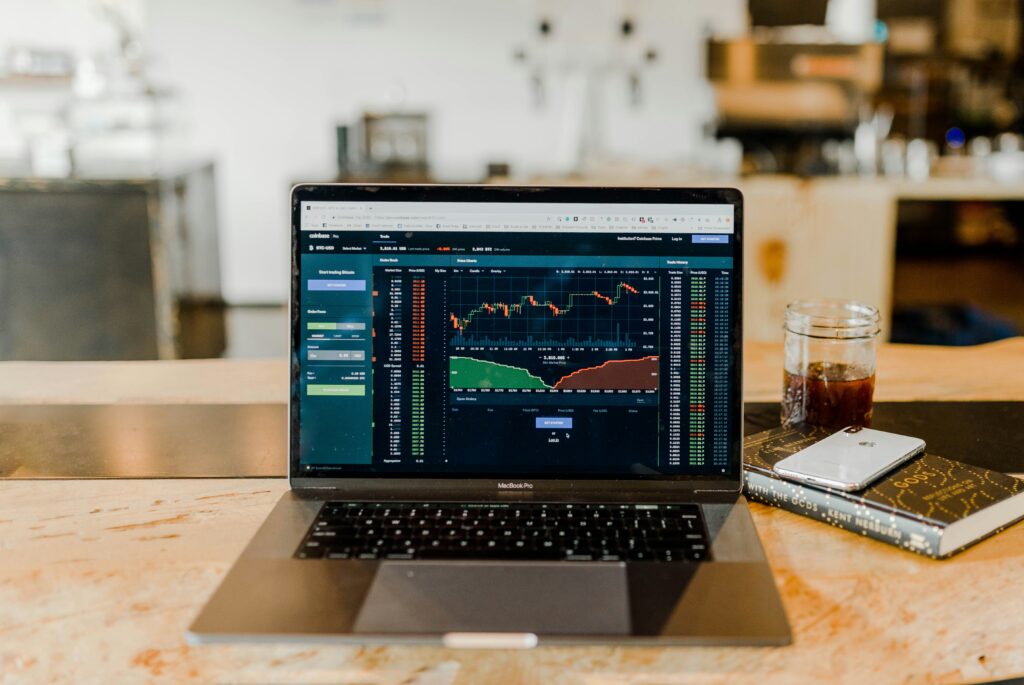Beginner's Guide to Stocks

Ever feel like the stock market is some secret club where only Wall Street guys in suits make money? Don’t worry—you’re not alone. The truth is, investing in stocks is way simpler than it seems. In this guide, we’ll break down everything beginners need to know, from what stocks are to how to start investing today—without the confusing jargon.
And because we like making money, we’ll also show you which platforms are best for beginners and how to avoid costly mistakes. Let’s get started with our beginner’s guide to stocks.
What Are Stocks & How Do They Work?
At its core, a stock is simply a tiny piece of a company. When you buy a stock, you own a small share of that business—whether it’s Apple, Tesla, or some startup your friend swears will be “the next big thing.” If you want to get a little deeper into the weeds, check out Investopedia’s stock market overview for a solid breakdown.
But Why Do Stocks Have Value?
Stock prices go up when companies grow and make money. If people think a company will do well, more investors buy the stock, pushing the price higher. On the flip side, if the company struggles, stock prices drop (cue the panic selling).
Check out the difference between value and growth stocks.
Pro Tip: Over time, the stock market has averaged a 10% return annually, which means long-term investors tend to win—if they don’t panic sell.
How Does the Stock Market Actually Work?

The stock market is where buyers and sellers trade shares of publicly traded companies. It operates like an auction house, where stock prices change based on supply and demand.
🔹 Key Terms You Should Know:
✔ Stock Exchange – The marketplace where stocks are traded (e.g., NYSE, NASDAQ).
✔ Broker – The middleman that lets you buy and sell stocks (e.g., Robinhood, Webull).
✔ Bull Market vs. Bear Market – When stocks go up 📈 (bull) or down 📉 (bear).
The stock market has ups and downs, but long-term investors who stay invested tend to come out ahead.
What are the Different Types of Stocks?
Not all stocks are created equal. Some are safer while others offer a higher degree of risk/reward. Here’s a quick breakdown of the major types:
| Type of Stock | Risk Level | What It's Best For |
|---|---|---|
| Large Cap Stocks (Apple, Amazon) | Low to Medium | Safe, long-term growth |
| Small Cap Stocks (Emerging companies) | High | High risk, high reward |
| Growth Stocks (Tech, innovation-focused) | Medium to High | Investors looking for rapid gains |
| Dividend Stocks (Companies that pay regular income) | Low to Medium | Steady income seekers |
| ETFs (Bundles of stocks, like S&P 500 funds) | Low | Diversification, lower risk |
Lets' Learn How to Buy Our First Stock
1️⃣ Pick an Investing Platform
To buy stocks, you need a brokerage account. Some of the best platforms for beginners include:
Robinhood (Easy-to-use, zero commissions)
Webull (More tools, free stock bonus)
M1 Finance (Automated investing)
2️⃣ Open Your Account
Signing up is free—you just need basic info (name, address, SSN for tax purposes).
3️⃣ Fund Your Account
Deposit money via bank transfer (some brokers even give a bonus for funding your account).
4️⃣ Research & Choose a Stock
Start with well-known companies you believe in. Tip: Many platforms let you buy fractional shares, so you don’t need $3,000 to buy Amazon stock!
5️⃣ Place Your Order & Buy!
Once you’ve chosen a stock, you can place a market order (buys instantly) or a limit order (buys at a specific price).
Avoid going all-in on one stock. Diversify to reduce risk.
Common Investing Mistakes That Cost Beginners Thousands
Panic Selling – Stock drops? Don’t sell out of fear. Markets recover.
Chasing Hype Stocks – If a stock is skyrocketing overnight, you’re probably late.
Ignoring Fees – Some brokers still charge commissions—avoid them!
These are some pretty major pitfalls. Do they sound easy to avoid? It might be harder than you think. Too many times investors see a stock start to fall and sell it for a loss. Most of the times this happens, if they would have just waited, the stock would have recovered and they could have waited to sell for a profit.
What about the hype stocks? Just like our point says above; if it is skyrocketing overnight, you’re probably too late. Trying to time this is near impossible. Can you get lucky? Sure. Will you get lucky? More often than not, the answer is no.
Best Investment Platforms for Beginners
Choosing the right broker is key for long-term success. Here are the top picks:
✔ Robinhood – Easy-to-use, no commissions, get free stock for signing up.
✔ Webull – More advanced tools + free stocks for new users.
✔ M1 Finance – Ideal for automated investing & diversification.
🔹 Compare More Investing Platforms Here
Ready to Start Investing?
Ready to Start Investing?
A $100 investment today could be worth thousands in the future. If you would have put just just $100 into Amazon just 10 years ago, it would be worth roughly $1,000 today. Just think about that. A chance to make 10x your money? I don’t know about you, but most people would take that in a heartbeat. But the only way you can make wins like this is to get started. Ten years from now seems like a long way away, but it’s not. One day you will wake up and wonder what could have been if you don’t make that first step. Start your investing journey with the best platforms:
Remember: Investing is a long-term game. The best time to start? Now.
